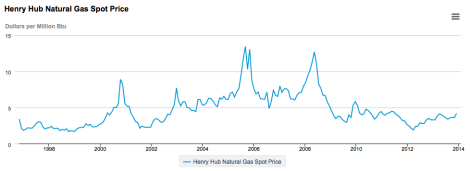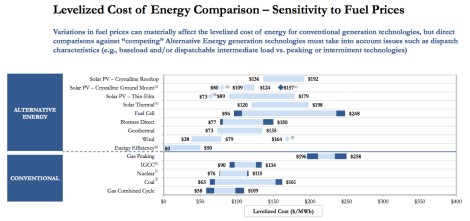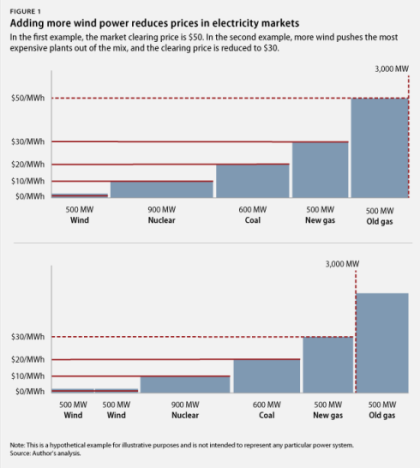In his State of the Union, President Obama added to the conventional wisdom that supplanting coal with natural gas will act as a bridge toward a climate solution. Unfortunately, gas is more of a gateway drug than a bridge to a clean energy future.
1) It’s still a major greenhouse gas. Sure, natural gas is cleaner than coal, but that’s setting a pretty low bar. Even if my shit smells sweeter than most, it’s still shit.
Natural gas powered electricity still pours 1.22 lbs of carbon dioxide into the atmosphere for every kilowatt-hour of electricity it produces. That’s 6 tons of CO2 per year from every household in America if its electricity were completely generated with natural gas.
And that’s the emissions from the stuff that actually gets to the power plant. The EPA has collected industry-reported data suggested that leakage from the drilling, production, and pipeline process runs close to 1.5%. Other studies show much higher leakage rates. At a 2.7% leakage rate, gas is no better than coal for the climate.
2) Gas for electricity competes with gas for heating (and gas for transportation). The recent “polar vortex” events have meant spikes in home heating costs. As Forbes notes, “The cold affected electricity generation systems, particularly natural gas, in the Mid-Atlantic and the Northeast such that supply weakened and prices skyrocketed. In New England, natural gas faltered so much that regional grid administrator ISO-New England had to bring up dirtier coal and oil plants to try to make up the difference.”
With gas prices as volatile as history shows (data below from EIA), increasing gas reliance in sectors other than home heating (e.g. electricity, transportation) is just asking for Oil Crisis v2.

3) In electricity and transportation, we have much cleaner options. If you want a cleaner way to heat your home than natural gas, you’re going to have to pay a lot more. Solar hot water, geothermal, and other renewable options are not yet cost competitive.
But in the electricity market, renewables are more cost-effective than natural gas. Wind power is routinely the lowest cost wholesale power, as the following cost comparison from investment bank Lazard (from 2011) illustrates.

Solar power plants are competitive in a different way. They tend to deliver power right when natural gas power plants operate, at periods of peak demand (which is, in part, why a judge recently told a Minnesota utility to buy solar instead of building new natural gas power plants). Even back in 2011, California utilities were buying energy from solar on long-term contracts for less than the cost of energy from natural gas power plants.
Furthermore, because they have zero fuel cost, wind and other renewables tend to exert downward pressure on wholesale electricity costs, as shown in the following graphic.

In transportation, natural gas loses to electric vehicles. Natural gas vehicles can reduce greenhouse gas emissions by 20-30% over gasoline vehicles, but electric vehicles would lower emissions by 50-75% in most regions of the country, and they get better as grid electricity gets cleaner. And electric vehicles cost less per mile driven (5¢ compared to 6.7¢ for natural gas). Additionally, why build an entirely new refueling network for natural gas vehicles when every gas station and home in America already has a power outlet?
4) Building natural gas infrastructure chains us to a carbon-based energy future for 50 years. Electric utilities build power plants with 50 year life expectancies, same for gas companies and pipelines. Every dollar invested in dirty gas infrastructure is a dollar not spent building solar and wind farms, not spent researching battery technologies, and not spent helping communities capture the most of their local energy dollar. And it’s committing us to burn more natural gas for decades, during a time which greenhouse gas emissions must fall precipitously to avoid the major consequences of climate chaos.
A Relapse
Expanding natural gas use in electricity and transportation is risky, it’s dirty, and – most of all – it’s unnecessary.
The electricity sector is already undergoing a rapid transformation to a carbon-free system, driven by renewable energy standards and rapidly falling costs for wind and solar power. Converting coal plants to natural gas makes short-term sense, but building new fossil fuel infrastructure when we have free-fuel renewables is inane.
The transportation sector has already identified a low-carbon alternative to gasoline vehicles with an in-place fuel network. Electric vehicles will only get more efficient and cleaner as they grow in numbers and as the grid gets greener.
Americans are finally on a course to wean ourselves from an unhealthy addiction to fossil fuels in two major sectors of our economy. Natural gas isn’t a bridge, it’s a relapse. And it’s time we admit it.
Photo credit: Roadsidepictures (Flickr)



